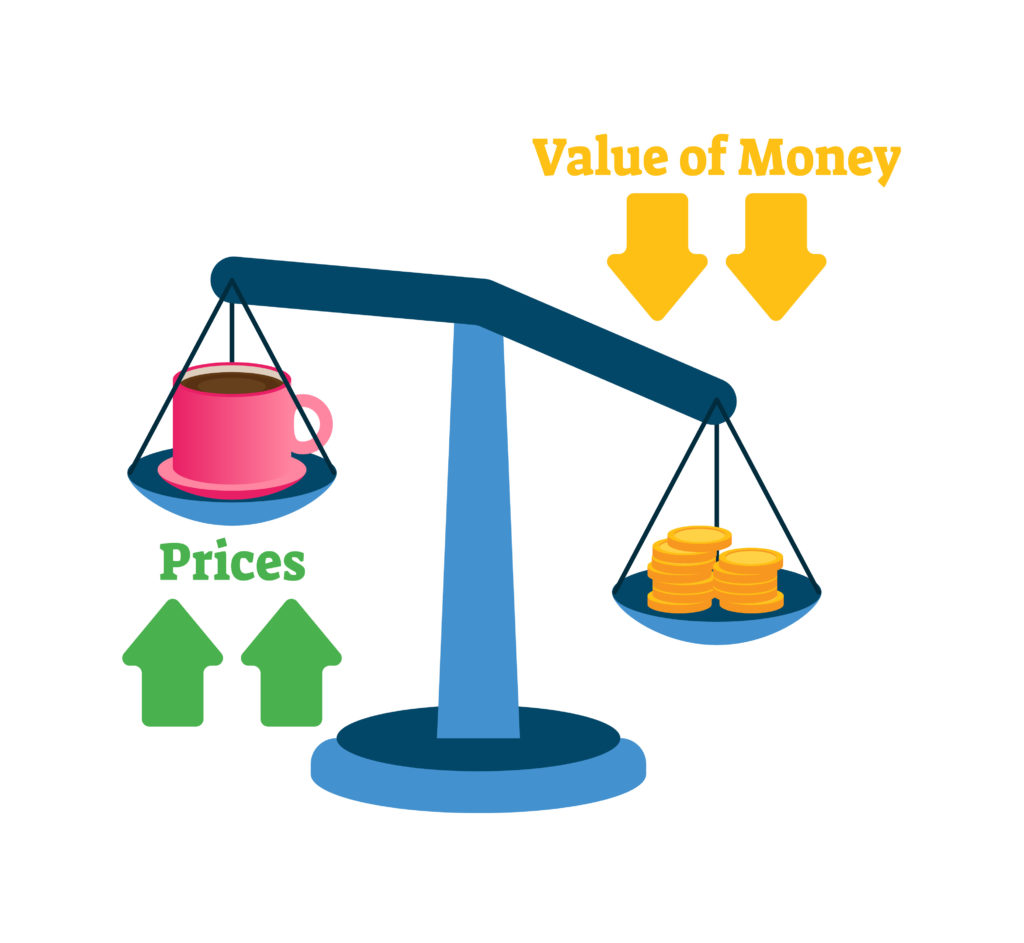
Some economists and investors are warning about the threat of rising inflation even with the U.S. still struggling to recover from the deepest recession ever. What’s behind these seemingly sudden inflationary fears and how big is the threat?
Why all this “inflation rising” talk?
Washington has already enacted about $3 trillion in financial aid for families, unemployed workers, and struggling businesses since the onset of the pandemic last spring. Now, the Biden administration has just added another $1.9 trillion. These are astonishingly huge sums! All that extra money floating around, along with record-low interest rates, has been argued as a primary catalyst for pushing stocks to record highs.
It could also trigger a massive boom in pent-up consumer spending as coronavirus vaccines are widely administered and the U.S. economy likely recovers, as a result. Businesses, inevitably, would respond to the surge in demand by raising prices.
Ergo, higher inflation.
What’s the worry?
Inflation erodes the value of money. Families fall behind when prices rise faster than their paychecks. Higher prices also drive-up rates ultimately causing greater interest in fixed income instruments.
The worst-case scenario envisions an unexpectedly large increase in inflation by early next year topping well over 3% that forces the Federal Reserve to raise interest rates sooner and more aggressively than expected. Higher inflation and interest rates could choke off growth in a still-healing economy and potentially even induce another recession.
The Biden stimulus could “set off inflationary pressures of a kind we have not seen in a generation,” wrote former Democratic Treasury Secretary Lawrence Summers in a widely read op-ed published in the Washington Post.
How likely are higher prices?
Very. Inflation is on the rise again and is likely to move higher into next year.
Read:Wholesale inflation posts biggest surge since 2009, PPI shows
How come? The cost of many goods and services fell early in the pandemic amid a brief collapse in demand and they are now returning to pre-crisis levels. Prices for some key raw materials such as lumber and soybeans have already jumped significantly.
The consumer price index, the main tool for measuring changes in the cost of living, rose in January at a 12-month pace of 1.4%. It had tumbled to a yearly rate of almost zero last May from a 2.3% clip just before the crisis started. Even the pre-pandemic level of inflation overstates the problem, however. Inflation has generally been quite tame over the past decade and mostly fallen short of the 2% target the Fed thinks is optimal for the U.S. economy.
How much inflation might the Fed tolerate?
A lot. Fed Chairman Jerome Powell is prepared for a burst of inflation once the economy is mostly healed, but he argued in a recent speech that any increase is likely to be mild and temporary. “That’s really not going to mean very much,” he said.
The Fed laid the groundwork for a more relaxed approach last year when it adopted a new strategy of “inflation averaging.” If inflation runs at, say, 1% for a while, the Fed would likely be willing to let it go to 3% for a similar period.
What’s so different now?
Quite a bit!
Back in the 1970s, the U.S. economy was more insulated from the rest of the world except for its dependency on foreign oil. Most goods that consumers purchased were made in America by unionized American workers who earned high wages. The oil shocks and related wage spirals in the 1970s produced the biggest prolonged bout of high inflation in American history.
Fast forward to today. Oil is a much smaller part of the economy, union membership is at a near all-time low, and the U.S. has become more integrated into a large global economy in which competition is as fierce as ever. Companies can relocate operations anywhere in the world to take advantage of lower production costs or cheaper labor in countries like China, Vietnam, Mexico, or India. That’s kept a tight check on prices.
Consumers, for their part, can log on to the Internet, find the cheapest prices, and order from all over in the world. No longer are they beholden to local merchants charging monopoly-like prices.
High inflation is all but certain to return someday, but most of the trends that were keeping inflation low before the pandemic will likely still be in place, once it subsides.
Be Ready for the Unexpected
New investing phases are normal. In the stock market, they are called “rotations”. Money often chases gains in certain sectors until a rally there becomes exhausted and then it rotates to others. It’s likely that investors will rotate into different sectors as we gradually climb out of this pandemic.
Predictions are hard. That’s why it’s important to avoid the temptation to over-focus on the short-term and ever-present media headlines and instead, construct a sound financial plan with an advisor that addresses your longer-term needs and goals. The new year also offers investors a chance to take stock of how they handled the unexpected events of the past 12 months and consider making changes.
In a world where uncertainty is more common, it’s important to be prepared for market highs and lows. While we can hope nothing as dramatic as a pandemic rears up again, investors need to become more comfortable with increased volatility in the marketplace for the foreseeable future.
One of the best ways for investors to handle volatility and the uncertainties of the future is by utilizing a diversified portfolio tailored to their goals, values, and risk tolerance. The team at Demand Wealth is passionate about helping clients achieve their financial goals. We individually assess your unique financial circumstances and develop strategies that are customized to your needs.
Are you interested in aligning your lifestyle with a diversified investment strategy to navigate the future? If so, we are here to help! Open an account here or schedule a Zoom conference with one of our advisors today.
This report is a publication of Demand Wealth. Information presented is believed to be factual and up-to-date, but we do not guarantee its accuracy and it should not be regarded as a complete analysis of the subjects discussed. All expressions of opinion reflect the judgment of the author as of the date of publication and are subject to change.
